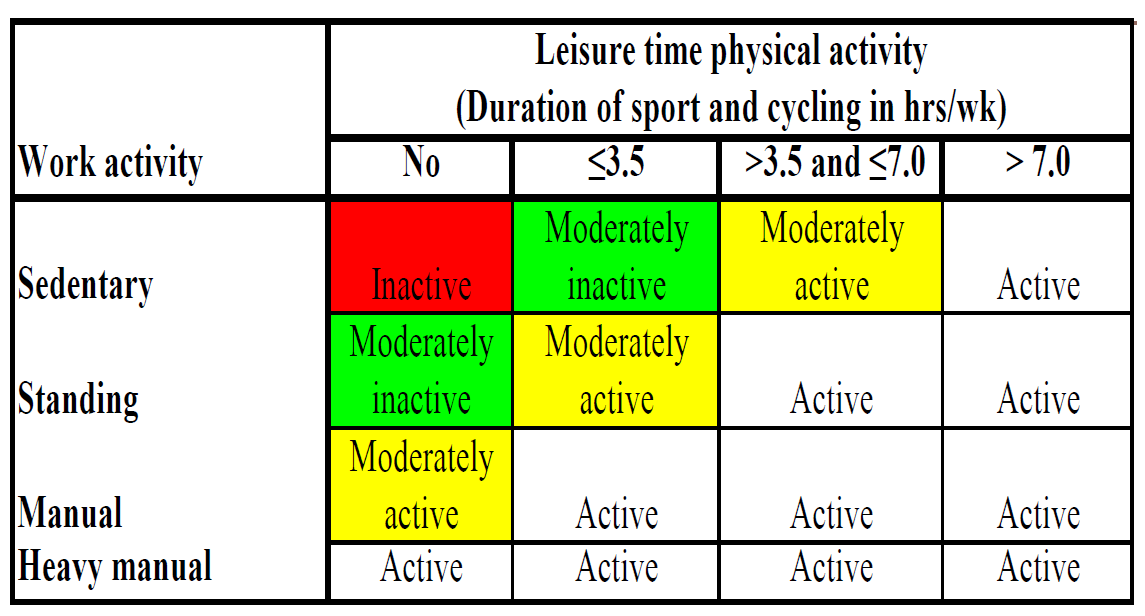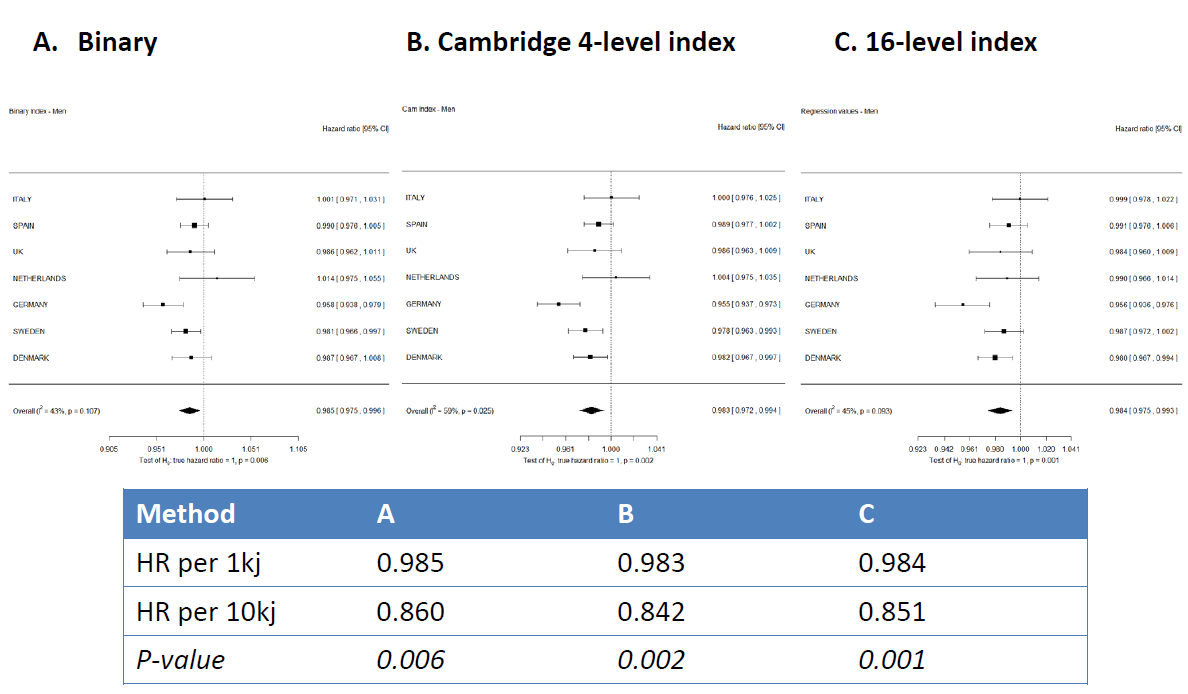The short EPIC Physical Activity Questionnaire (EPIC-PAQ) categorises individuals using a four-level “Cambridge index” derived from participant responses to two items (see Figure P.4.5). The index has been validated in 1,941 healthy individuals from ten European countries using the criterion of individually-calibrated combined heart-rate and movement sensing (InterAct Consortium, 2011). The two item responses can also be used to derive a binary index (inactive or active), or a 16-level index based on the four levels of occupational cross-tabulated with four levels of leisure-time physical activity shown in Figure P.4.5. Three indices were therefore derived:
- Binary (inactive or active)
- Cambridge index (inactive, moderately inactive, moderately inactive, active)
- 16-level index

Figure P.4.5 Derivation of the four level “Cambridge index”. Source: InterAct Consortium, 2011.
Mapping
The validation data were used to map each of the three indices to corresponding individual estimates of physical activity energy expenditure (PAEE) in kJ/kg/day, as shown in Figure P.4.6. This provided estimates of PAEE for each index category, which could then be assigned to responses from individuals who had not been assessed using the criterion.

Figure P.4.6 Use of validation data to map categories from three indices to estimates of physical activity energy expenditure (kJ/kg/day) assessed by criterion method for men (top) and women (bottom).
Meta-analysis using mapped data
As proof of concept, Cox regression was used to examine the association between PAEE and type 2 diabetes in each InterAct cohort (InterAct Consortium, 2010). This was conducted using PAEE mapped from each of the three indices separately. Meta-analyses were conducted across cohorts for men and women (see Figure P.4.7).


Figure P.4.7 Hazard ratios of type 2 diabetes by physical activity energy expenditure exposure mapped from three questionnaire indices in men (top) and women (bottom).
Conclusions
- Hazard ratios from meta-analysis across PAEE target variables derived from three questionnaire indices indicated that mapping using validation data achieved inferential equivalence.
- This method of harmonisation could be applied to all studies where validation of assessment method was available.
Limitations/further work
- Measurement error correction not performed
- Uncertainty propagation not performed
- Necessary to develop method for indirectly estimating uncertainty in the mapping procedure
- Weighting meta-analysis by validity of primary variables
- Separate modeling of regression dilution ratio using repeated measures sub-studies
